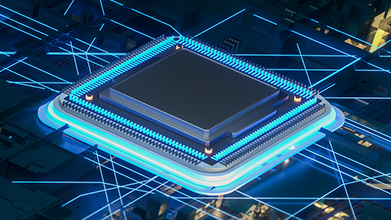Cloud native EDA tools & pre-optimized hardware platforms
Servers are the core of today’s computational world, processing and storing data on multi-user platforms. Server performance depends on latency and capacity of its memory and storage. In general, DDR-DIMMs (Double Data Rate Dual In-line Memory Modules) are used as server memory, whereas SSDs/HDDs are used as storage in server. Whenever a service request is made to the server, it may require both data processing and storage. In order to execute this service, the processor accesses DDR-DIMMs and SSDs/HDDs. In addition, SSDs/HDDs can be accessed in case of power loss, storing data using backup power sources so data can be retrieved once power is available again.
SSDs/HDDs provide much slower access to the server in comparison to DDR-DIMMs, and it creates a performance gap. To overcome this performance gap between SSDs/HDDs and DDR-DIMMs, a new technology is evolving in the market referred to as NVDIMM. This new technology can provide performance somewhat near to DDR-DIMMs at SSDs/HDDs capacity.
Let’s review NVDIMM and its different types…
(To explain the analogy in the next few sections, RAM/DRAM can be read as DDR-DIMMs and Flash as SSDs.)
What is NVDIMM?
NVDIMM (Non-volatile Dual In-line Memory Module) belongs to the non-volatile RAM (Random-Access Memory) family. It works like RAM when power is available, and in case of power loss data is retained using an on-board backup power source and non-volatile storage. NVDIMM is a combination of storage and memory. At the front end of NVDIMM, it uses RAM which is volatile in nature, whereas at the back end it can use any NAND Flash storage which can be non-volatile in nature. Since NVDIMM contains volatile as well as non-volatile memory, it is expected to have a higher cost in comparison to DRAM.
The following figure shows where NVDIMM stands in terms of speed, size and latency when compared with other computer memory and storage.

Types of NVDIMM
There are mainly four types of NVDIMM in the market. Three of them are JEDEC standardized and one is not.
The JEDEC standardized NVDIMMs are:
- NVDIMM-N: It is the oldest one of all NVDIMMs, where DRAM and Flash are on the same module. DRAM is memory mapped but Flash is not system mapped. Flash storage is used when power failure occurs and all the data from DRAM is copied to Flash using a small backup power source. As power becomes available, data is copied back to DRAM from Flash storage. Mostly super capacitors are used as a backup power source. It’s capacity, 1-10GB, and latency, 10’s of nanoseconds, is closest to DRAM amongst all NVDIMMs. It can fit into the same socket where DDR4/DDR5 DIMMs are installed.
- NVDIMM-F: F stands for Flash, meaning generally NAND Flash is used here. It came to market after NVDIMM-N. Flash is memory mapped but DRAM is not system mapped. It can have 100s GB to 1TB storage capacity with latency close to 10s of microseconds. Since the latency is huge, it is the slowest amongst all the NVDIMMs.
- NVDIMM-P: P stands for persistent. Flash (if used externally) and DRAM both are memory mapped. It can have 100s GB to 16TB storage capacity with latency close to 100s of nanoseconds, making it more viable for server applications compared to other types of NVDIMMs. It is said to be based on ReRAM technology. NVDIMM-P is the best in terms of capacity, however more improvement can be expected in terms of latency with this technology. NVDIMM-P memory technology aims to achieve storage inside DRAM, and it could be a better memory and storage solution for servers in future.
The non-JEDEC standardized NVDIMM is:
- NVDIMM-X: It has been developed by Xitore, Inc. based on DDR4 interface, which uses DRAM and NAND Flash on the same module.
Comparison of different types of NVDIMM
The type of NVDIMM can be chosen based on features and requirements. Different types of NVDIMMs are compared below for reference:

Conclusion
NVDIMM memory technology can bridge the performance gap between memory and storage solutions with servers. NVDIMMs are applied in cloud computing and the data center market where power failure is critical and high performance is required. A short-term power failure, system crash or service interruption at servers can create a huge loss, so NVDIMMs can be used to prevent data loss and it provide faster access to non-volatile storage. All that said, the cost factor will determine how much market space is being captured by NVDIMMs.
In addition, Synopsys has announced the industry’s first LPDDR5 IP & VIP solution extending leadership in DDR5/LPDDR5 and strengthening our leadership in memory VIP. Synopsys also recently announced the industry’s first DDR5 NVDIMM-P Verification IP, showcasing continued collaboration with leading memory vendors. Synopsys is engaged with the early adopters of LPDDR5, DDR5, DDR4/5 NVDIMM-P and DFI 5.0 VIPs.












